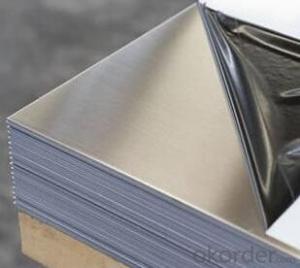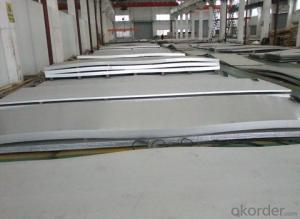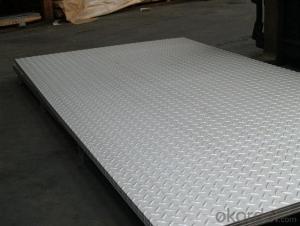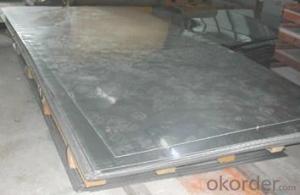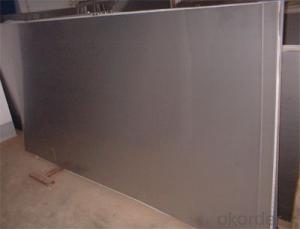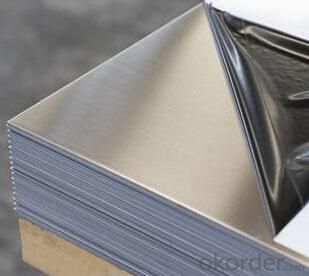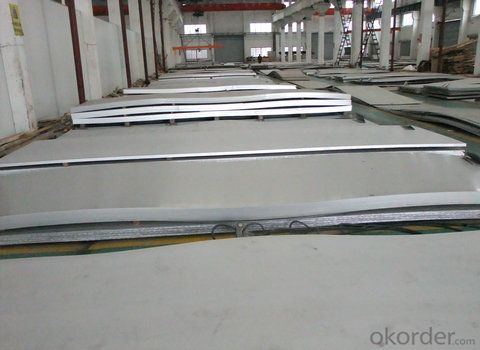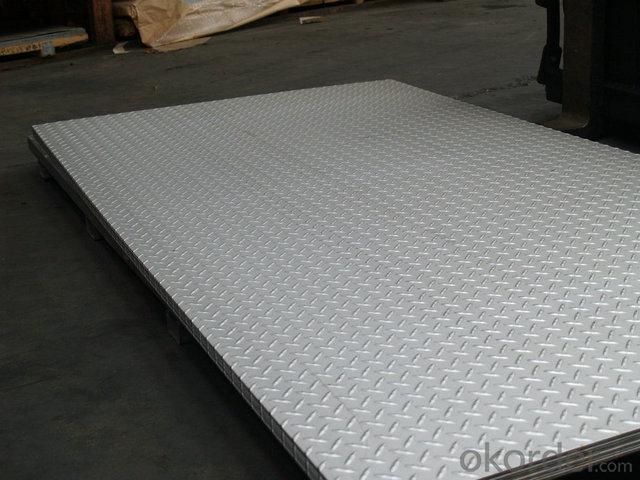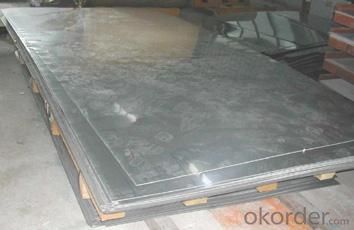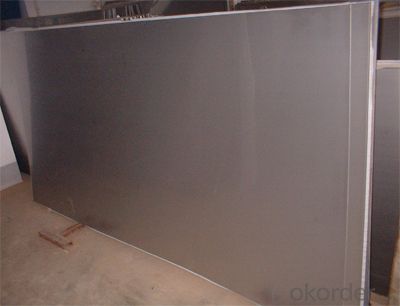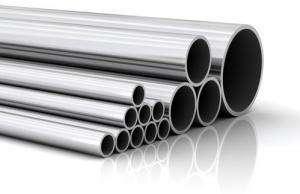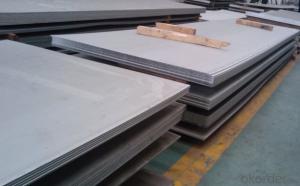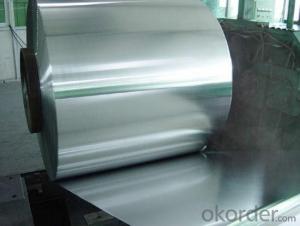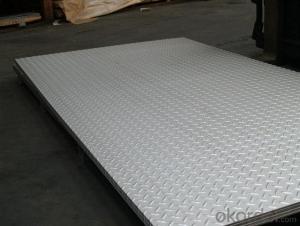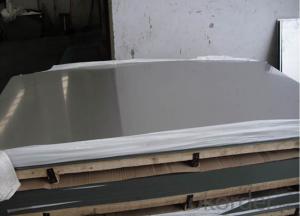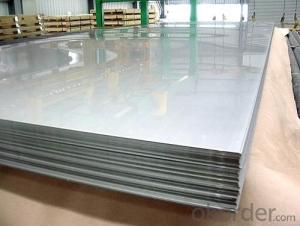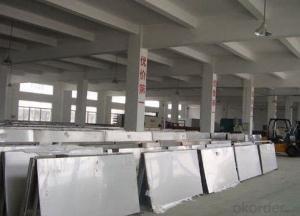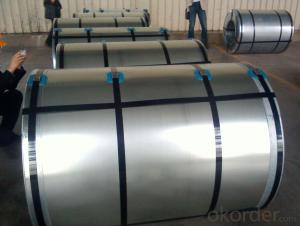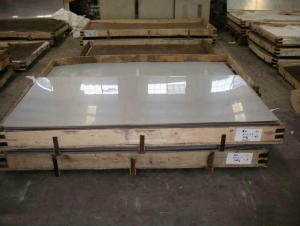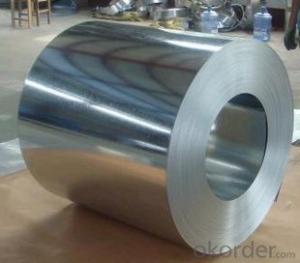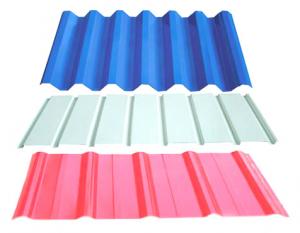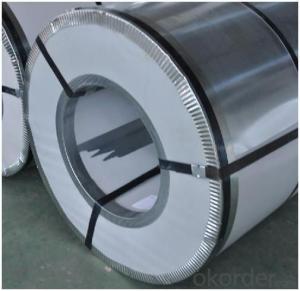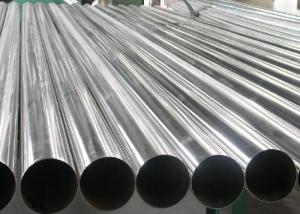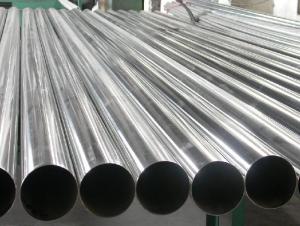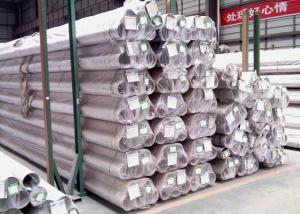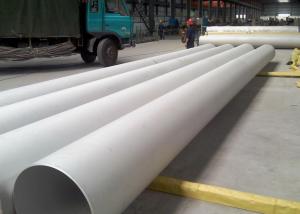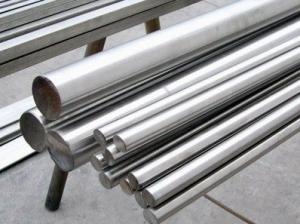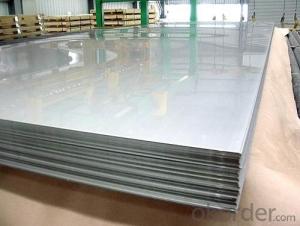Stainless Steel Sheet in ChaepPrice with Mill Test Certificate
- Loading Port:
- Shanghai
- Payment Terms:
- TT OR LC
- Min Order Qty:
- 10000 m.t.
- Supply Capability:
- 5000000 m.t./month
OKorder Service Pledge
OKorder Financial Service
You Might Also Like
Hot sale stainless steel sheet in china alibaba
Product Description
Stainless steel sheet Detailed introduction
Description | steel sheet,hot rolled steel sheet,cold rolled steel sheet, steel sheet,sheet,steel plate |
Standard | ASME, ASTM, EN ,BS,GB,DIN, JIS etc |
Application | Steel sheet applies to construction field, ships building industry, petroleum & chemical industries, war and electricity industries, food processing and medical industry, boiler heat exchanger, machinery and hardware fields. |
Packaging | Standard export sea-worthy packing |
Delivery time | 10-30 days |
Quality | No.1 |
Productivity | 500 tons/Day |
Note | Our company has cooperative relation between the domestic agents. Stainless steel sheet can be made accordingto the customers requirements. Fasten delivery. Quality assured. |
Contacts | If you have any question,please feel free contact me. |
Stainless steel sheet surface finish characteristics
Surface finish | Characteristics and application |
2B | The surface brightness and flatness of no2B is better than no2D. then through a special surface treatment to improve its mechanical properties,No2B could nearly satisfy comprehensive uses. |
No.1 | Polished with abrasive belt of grit#100-#200, have better brightness with discontinuous coarse stria, used as inner and external ornaments for building, electrical appliances and kitchen utensils etc. |
No.4 | Polished with abrasive belt of grit #150-#180,have better brightness with discontinuous coarse stria, but thinner than No3, are used as bathtub buildings inner and external ornaments electrical appliances kitchen utensils and food processing equipment etc. |
HL | Polished with abrasive belt of grit #150-#320 on the NO.4 finish and has continuous streaks, mainly used as buildings ornaments elevators, door of building, frontal plate etc. |
BA | Cold rolled, bright annealed and skin-passed, the product have excellent brightness and good reflexivity like mirror, kitchen apparatus, ornament etc. |
8K | The product have excellent brightness and prefer reflexivity can to be the mirror. |
Application :
•Escalator, Elevator, Doors
•Furniture
•Production tools, Kitchen appliances, freezers, cold rooms
•Auto Parts
•Machinery and Packaging
•Equipment and Medical devices
•Transport system
Product Details:
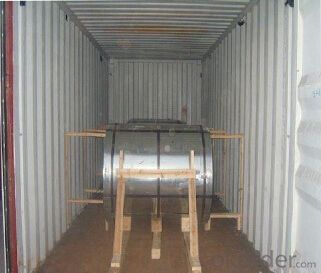
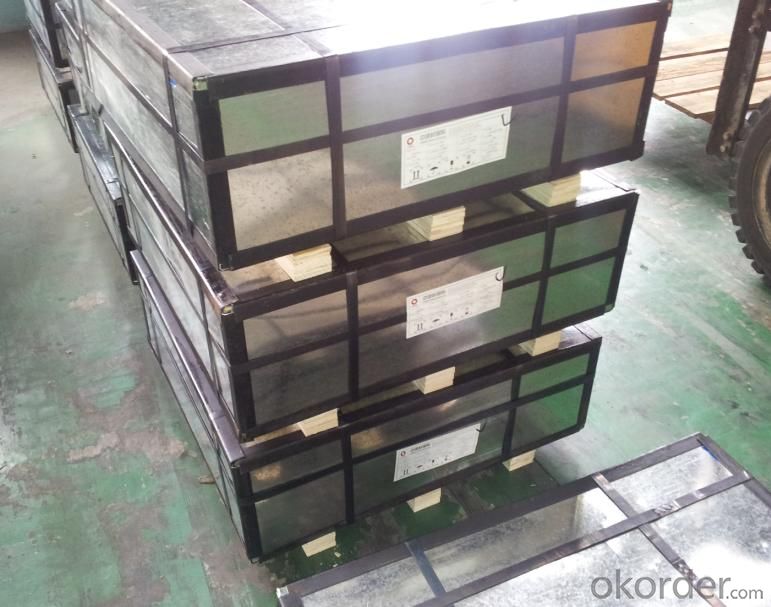
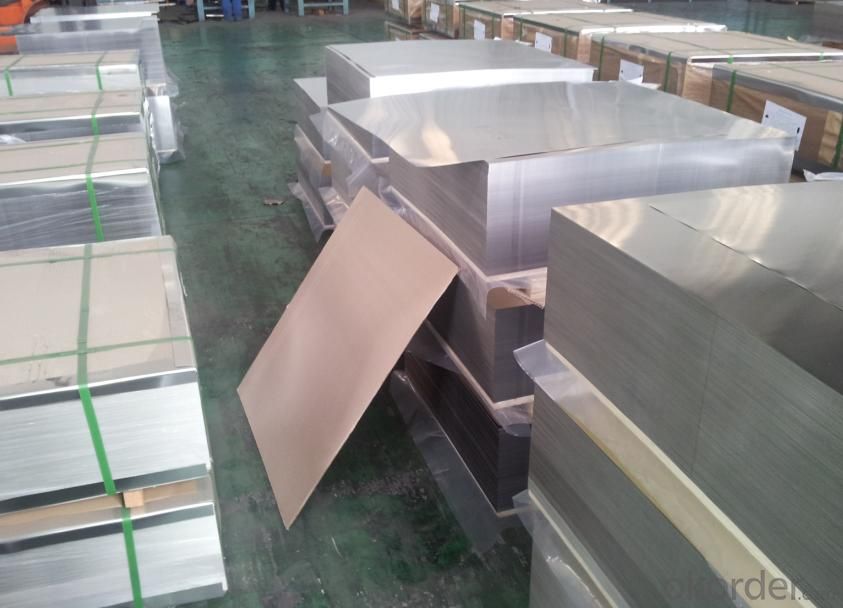
Sandard Seaworth Packing(wooden packing with water proof paper)


If you have any question about stainless steel sheets,donot forget to sending the email to Us! You will get the competitive Price and have a very good experience about the Buying Process! CNBM International Corporation is always your trustful friend!
- Q: What are the limitations of using stainless steel sheets?
- There are several limitations associated with using stainless steel sheets. Firstly, stainless steel sheets can be quite expensive compared to other materials. This can make it less feasible for certain budget-conscious projects or applications. Secondly, stainless steel sheets are relatively heavy, which can make them difficult to handle and install, especially in large quantities. This can increase labor costs and require additional equipment for transportation and installation. Thirdly, stainless steel sheets are prone to scratching and denting. While stainless steel is known for its durability, it is not entirely resistant to physical damage. Scratches and dents can diminish the appearance and functionality of the sheets, particularly in high-traffic areas or environments where there is a risk of impact. Additionally, stainless steel sheets can be susceptible to corrosion, although to a lesser extent compared to other metals. In certain conditions, such as exposure to saltwater or harsh chemicals, stainless steel sheets may develop rust or other forms of corrosion. Regular maintenance and proper care are necessary to prevent or minimize this issue. Another limitation is that stainless steel sheets have limited color options. They generally come in shades of silver or gray, which may not be suitable for projects that require specific colors or aesthetics. Lastly, stainless steel sheets have poor insulation properties. They conduct heat and cold more efficiently than other materials, which can result in greater energy loss and higher heating or cooling costs. In applications where insulation is crucial, additional measures or alternative materials may be required. In conclusion, while stainless steel sheets offer numerous advantages such as strength, corrosion resistance, and durability, they also have limitations in terms of cost, weight, susceptibility to damage, corrosion, limited color options, and poor insulation properties. Understanding these limitations is crucial when considering the use of stainless steel sheets in various applications.
- Q: How do you clean stainless steel sheets?
- To clean stainless steel sheets, you can follow a simple and effective process. First, remove any loose dirt or debris from the surface by gently wiping it with a soft cloth or sponge. Next, prepare a cleaning solution by mixing warm water with a mild detergent or dish soap. Dip a non-abrasive sponge or cloth into the solution and gently scrub the stainless steel sheet in the direction of the grain. Avoid using abrasive materials or harsh chemicals as they can damage the surface. Rinse the sheet thoroughly with clean water to remove any soap residue. Finally, dry the sheet with a soft cloth or towel, again following the grain to prevent water spots or streaks. This process will help maintain the shine and cleanliness of your stainless steel sheets.
- Q: Can stainless steel sheets be used for column covers?
- Yes, stainless steel sheets can be used for column covers.
- Q: Are stainless steel sheets resistant to corrosion?
- Yes, stainless steel sheets are generally highly resistant to corrosion due to the presence of chromium in their composition, which forms a protective oxide layer on the surface. This oxide layer acts as a barrier, preventing the metal from being exposed to corrosive elements and ensuring its durability in various environments.
- Q: Can stainless steel sheets be used for wastewater treatment?
- Yes, stainless steel sheets can be used for wastewater treatment. Stainless steel is highly resistant to corrosion and can withstand harsh chemicals and environments, making it an ideal material for wastewater treatment applications. It can be used for constructing tanks, pipes, and other equipment used in the treatment process. Stainless steel sheets are also easy to clean and maintain, reducing the risk of contamination. Additionally, stainless steel is a sustainable material as it can be recycled, making it an environmentally friendly choice for wastewater treatment facilities.
- Q: Are stainless steel sheets resistant to high temperatures?
- Yes, stainless steel sheets are generally resistant to high temperatures. Stainless steel is known for its excellent heat resistance properties, making it suitable for a wide range of high-temperature applications. The composition of stainless steel, which includes chromium, nickel, and other alloying elements, creates a protective oxide layer on its surface. This oxide layer acts as a barrier against oxidation and prevents the steel from corroding or weakening at elevated temperatures. Stainless steel sheets can withstand temperatures up to around 1500°F (815°C) without losing their structural integrity. However, the exact temperature resistance may vary depending on the specific grade and thickness of the stainless steel sheet. It is always recommended to consult the manufacturer's specifications or seek professional advice for specific high-temperature applications.
- Q: Can stainless steel sheets be used for bridge construction?
- Certainly, bridge construction can make use of stainless steel sheets. Given its exceptional durability and resistance to corrosion, stainless steel emerges as an ideal option when confronted with harsh environmental conditions. The structural strength, stability, and long-term dependability offered by stainless steel sheets render them suitable for a myriad of bridge components, including beams, girders, and decking. Moreover, stainless steel's aesthetic charm and minimal maintenance demands further enhance its appropriateness for bridge construction endeavors.
- Q: How do you prevent pitting or crevice corrosion on stainless steel sheets?
- To prevent pitting or crevice corrosion on stainless steel sheets, certain measures can be taken. First, ensuring proper cleaning and maintenance is crucial. Regularly cleaning the stainless steel sheets with mild detergent and water, followed by thorough rinsing and drying, helps remove any contaminants that can lead to corrosion. Additionally, avoiding exposure to corrosive substances like chloride-based cleaners or harsh chemicals is important. Applying a protective coating or passivating the stainless steel surface can also provide an extra barrier against corrosion. Passivation involves treating the stainless steel with a mild oxidizing agent to promote the formation of a passive oxide layer, which enhances the metal's resistance to corrosion. Proper design and installation practices are equally vital. Avoiding the use of dissimilar metals in contact with stainless steel sheets and ensuring proper sealing and gasketing in joints or crevices can prevent crevice corrosion. Adequate ventilation and avoiding stagnant conditions can also help minimize corrosion risks. Regular inspection and maintenance are necessary to identify and address any signs of corrosion promptly. This includes checking for signs of pitting or crevices, addressing any damage or scratches, and promptly repairing or replacing any corroded areas.
- Q: Are stainless steel sheets suitable for petrochemical refineries?
- Yes, stainless steel sheets are suitable for petrochemical refineries. Stainless steel is a highly corrosion-resistant material that can withstand harsh environments and extreme temperatures, making it ideal for use in petrochemical refineries. It offers superior resistance to chemicals, acids, and caustic materials commonly found in refining processes. Additionally, stainless steel sheets have excellent mechanical properties and can withstand high pressure and stress, ensuring durability and reliability in refinery operations. The non-porous surface of stainless steel also prevents the accumulation of bacteria and other contaminants, making it hygienic and easy to clean. Overall, stainless steel sheets are a preferred choice in petrochemical refineries due to their exceptional corrosion resistance, mechanical strength, and ease of maintenance.
- Q: Are stainless steel sheets resistant to acetic acid?
- Yes, stainless steel sheets are generally resistant to acetic acid.
Send your message to us
Stainless Steel Sheet in ChaepPrice with Mill Test Certificate
- Loading Port:
- Shanghai
- Payment Terms:
- TT OR LC
- Min Order Qty:
- 10000 m.t.
- Supply Capability:
- 5000000 m.t./month
OKorder Service Pledge
OKorder Financial Service
Similar products
Hot products
Hot Searches
Related keywords
